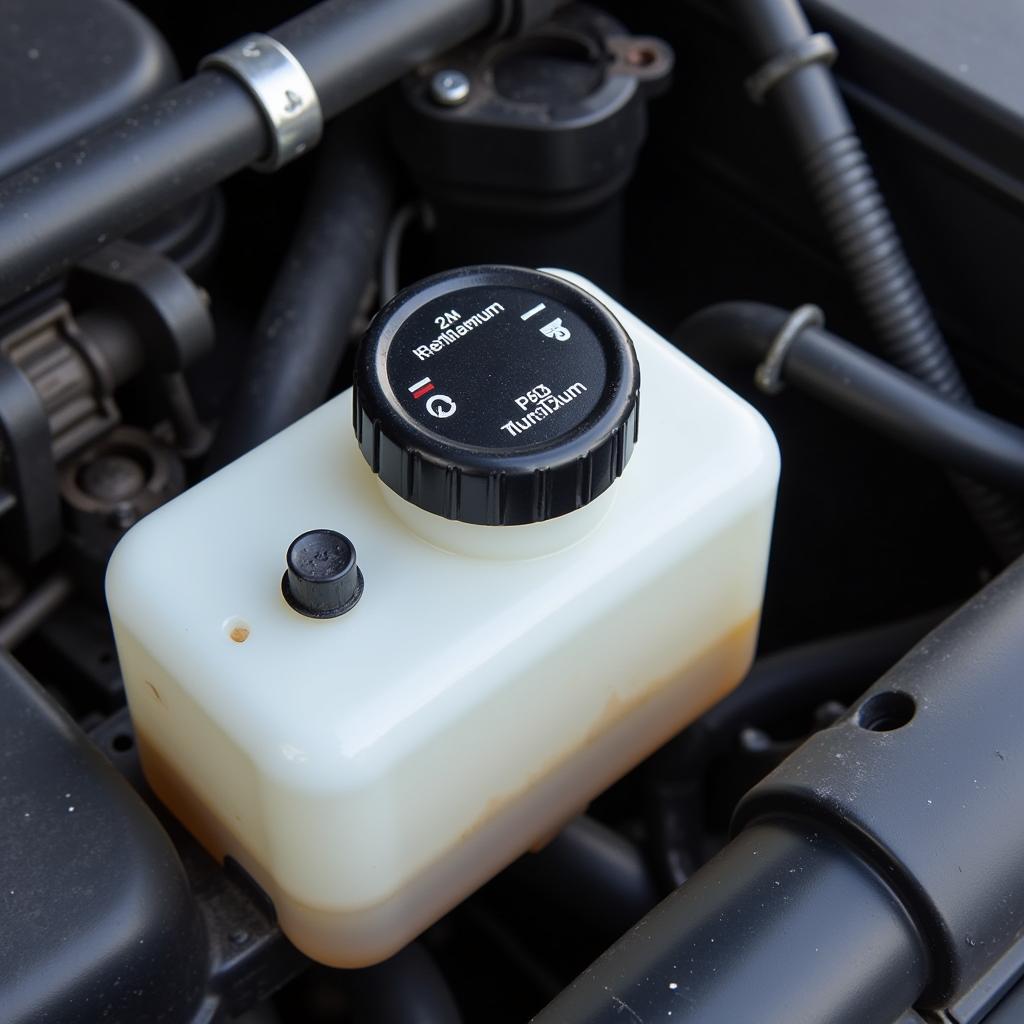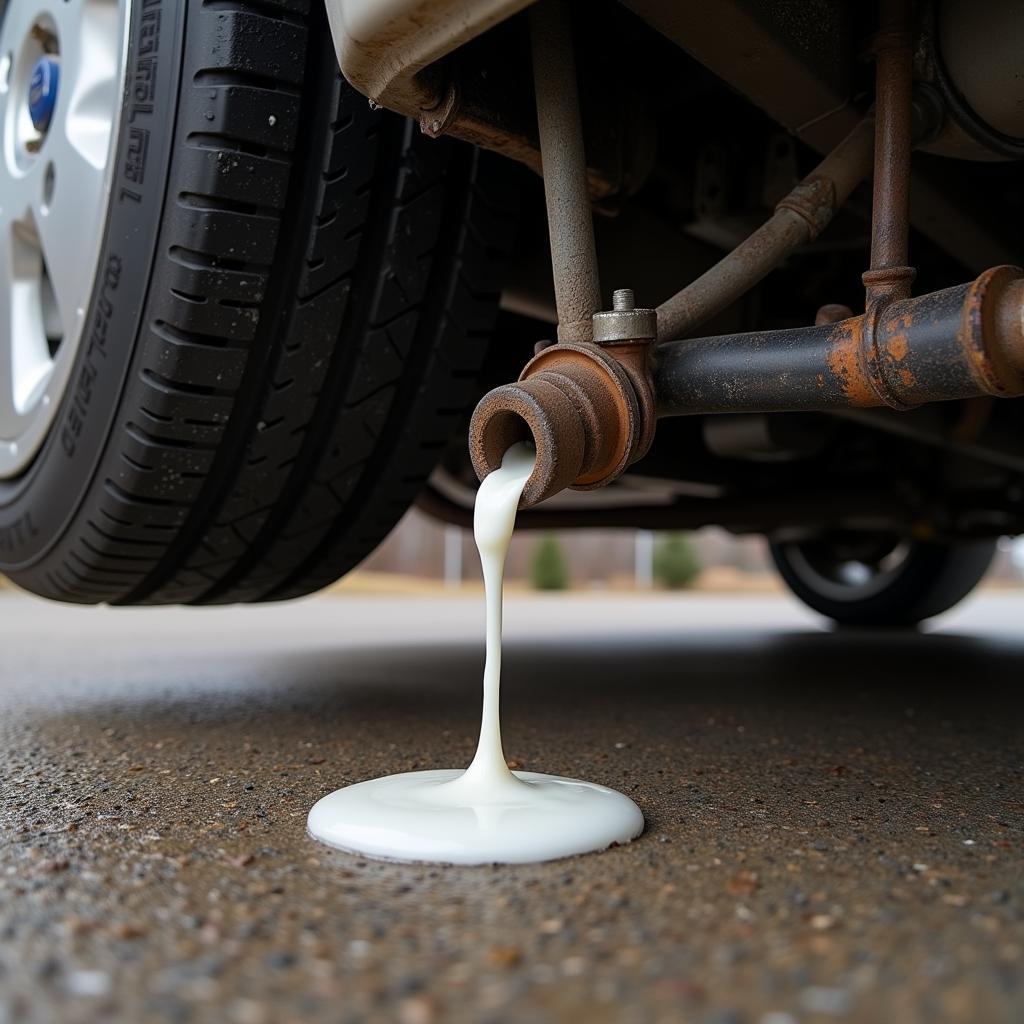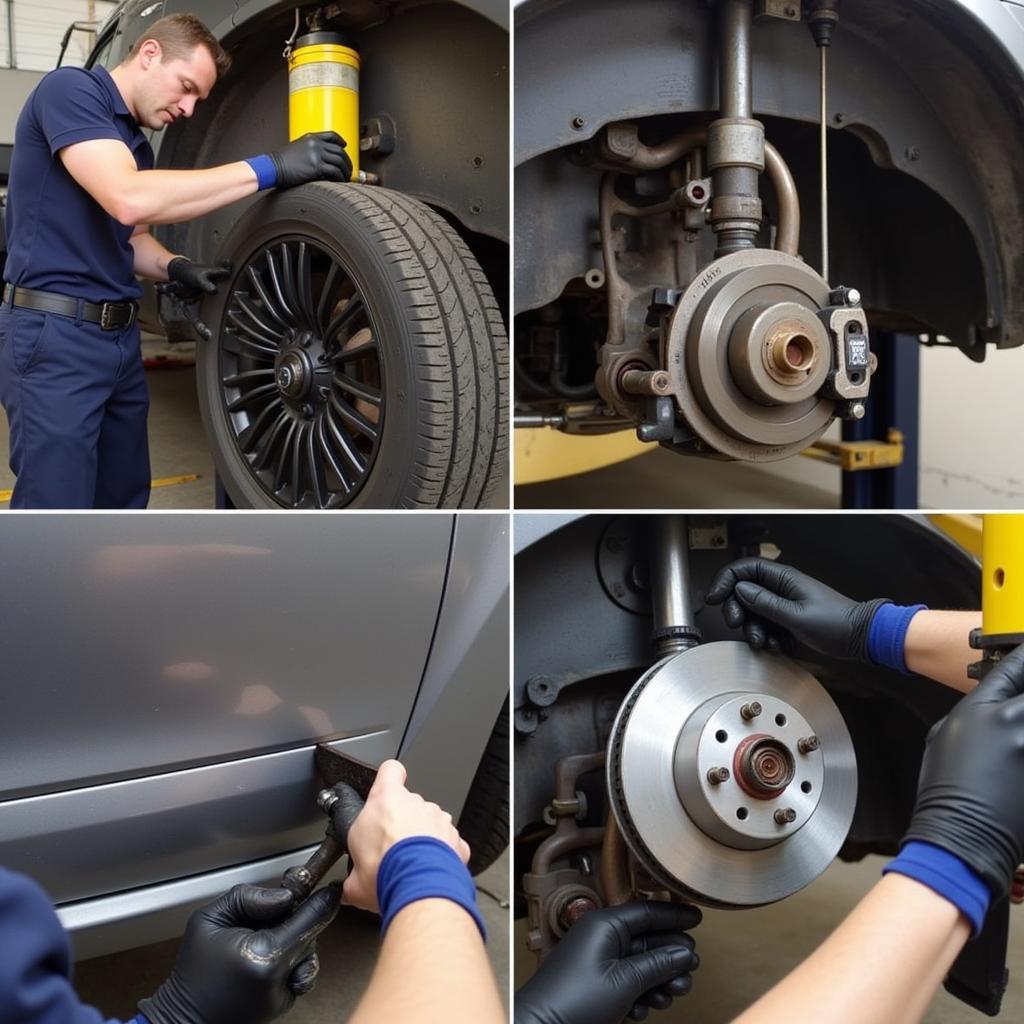A “Low Brake Fluid” warning illuminating on your Volvo C30’s dashboard is a serious issue that should never be ignored. This warning indicates a potential problem with your car’s braking system, which could compromise your safety and the safety of others on the road. In this article, we’ll delve into the common causes of low brake fluid in a Volvo C30, explore the potential consequences of neglecting this warning, and guide you through the necessary steps to diagnose and address the issue.
Understanding Your Volvo C30’s Braking System
Your Volvo C30 relies on a hydraulic braking system to slow down and stop. This system uses brake fluid, a specialized hydraulic fluid, to transmit force from the brake pedal to the brakes at each wheel. When you press the brake pedal, the force is amplified and transferred through the brake lines, filled with brake fluid, to activate the brake calipers or wheel cylinders. This action forces the brake pads or shoes to clamp down on the brake rotors or drums, generating the friction needed to stop the vehicle.
Common Causes of Low Brake Fluid in a Volvo C30
Low brake fluid in your Volvo C30 is often a sign of a leak somewhere in the braking system. Here are some common culprits:
- Worn Brake Pads or Shoes: As brake pads wear down, the brake calipers need more fluid to achieve the same braking force. If the pads wear down significantly, it can lead to a drop in brake fluid level.
- Leaking Brake Lines or Hoses: Over time, brake lines and hoses can corrode or become damaged, resulting in brake fluid leaks.
- Faulty Master Cylinder: The master cylinder is responsible for pressurizing the brake fluid. A leak or internal failure in the master cylinder can lead to a loss of brake fluid and reduced braking performance.
- Worn Brake Calipers or Wheel Cylinders: Leaks can occur in the seals of brake calipers (for disc brakes) or wheel cylinders (for drum brakes), leading to fluid loss.
 Volvo C30 Brake Fluid Reservoir
Volvo C30 Brake Fluid Reservoir
Dangers of Ignoring a Low Brake Fluid Warning
Driving with low brake fluid can have serious consequences:
- Reduced Braking Power: As brake fluid levels drop, the hydraulic pressure within the braking system decreases, leading to a spongy or soft brake pedal and significantly reduced braking power.
- Complete Brake Failure: In extreme cases, if the brake fluid level drops critically low, you may experience complete brake failure, rendering your vehicle unable to stop.
- Expensive Repairs: Ignoring a low brake fluid warning can lead to more extensive damage to your braking system components, resulting in costlier repairs down the road.
What to Do When You See the Warning
If your Volvo C30 displays a “Low Brake Fluid” warning, it’s crucial to take immediate action:
- Pull Over Safely: Find a safe location to pull over as soon as possible. Avoid heavy traffic areas and park your car away from potential hazards.
- Check the Brake Fluid Level: With the engine off and the vehicle parked on a level surface, locate the brake fluid reservoir under the hood. It’s typically a translucent plastic container with a black cap. Carefully remove the cap and check the fluid level.
- Do Not Drive If the Fluid Is Low: If the brake fluid level is below the “Min” mark, do not attempt to drive the vehicle. Driving with extremely low brake fluid is incredibly dangerous.
 Volvo C30 Brake Fluid Leak
Volvo C30 Brake Fluid Leak
Diagnosing the Problem
- Visual Inspection: Carefully examine the area around the brake fluid reservoir, brake lines, hoses, calipers, and wheel cylinders for any signs of leaks. Look for wet spots, drips, or fluid residue.
- Professional Diagnosis: If you cannot locate the source of the leak or are uncomfortable working with brake systems, it’s essential to have a qualified mechanic diagnose the problem.
Expert Insight
“Brake fluid is the lifeblood of your car’s braking system,” says Sarah Williams, a certified automotive technician with over 15 years of experience. “Ignoring a low brake fluid warning is like ignoring a flashing red light – it’s simply not worth the risk. Even a small leak can quickly escalate into a major safety concern.”
Getting It Fixed
-
Addressing Leaks: Repairing a brake fluid leak typically involves replacing the damaged component, such as a brake line, hose, caliper, or wheel cylinder. It’s essential to use new, high-quality brake fluid that meets the specifications outlined in your Volvo C30’s owner’s manual.
-
Bleeding the Brakes: After addressing a leak or adding brake fluid, it’s crucial to bleed the brakes. This process removes any air bubbles that may have entered the brake lines, ensuring optimal braking performance.
 Volvo C30 Brake Repair
Volvo C30 Brake Repair
Conclusion
The “Low Brake Fluid” warning in your Volvo C30 is a serious safety concern that demands immediate attention. Never ignore this warning or postpone addressing the underlying problem. By understanding the potential causes, recognizing the dangers, and taking prompt action, you can help ensure the safety and reliability of your Volvo C30’s braking system. Remember, when it comes to your brakes, err on the side of caution and seek professional assistance if needed.
